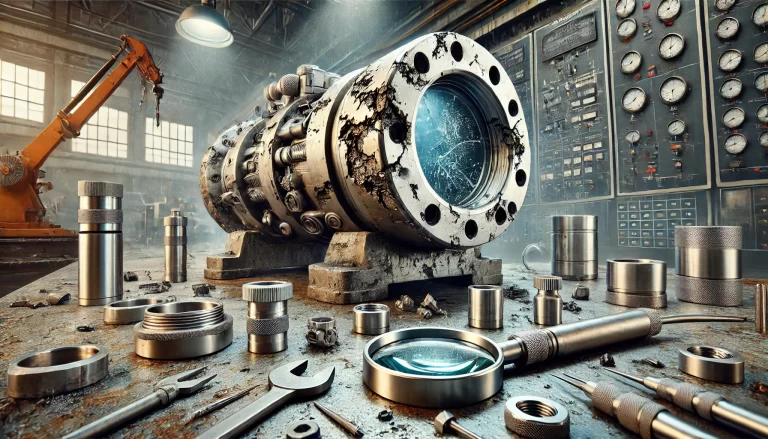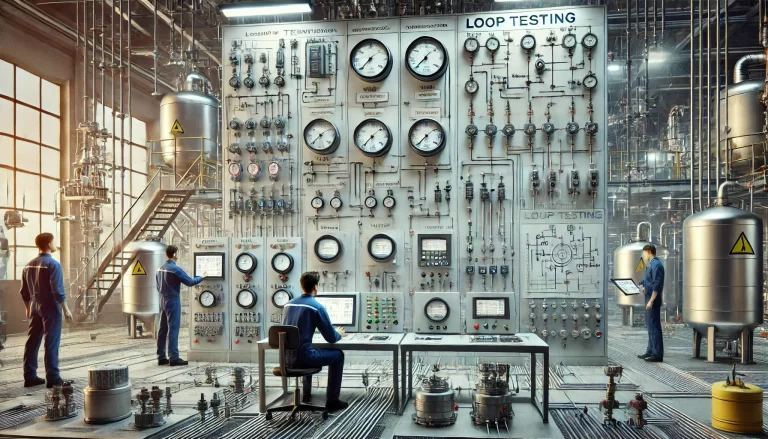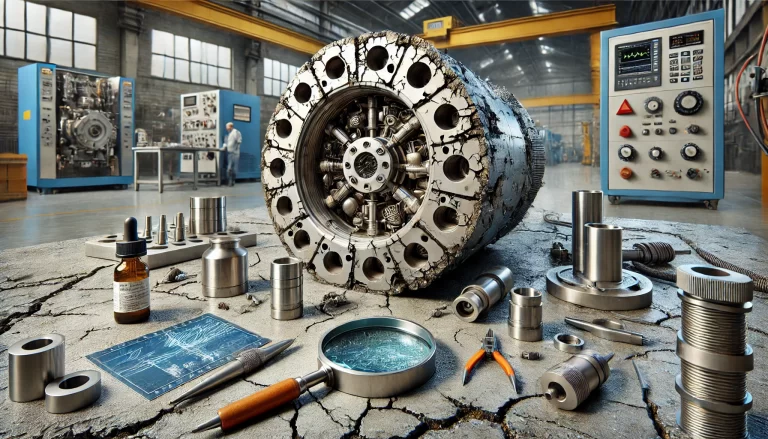Stress rupture, exacerbated by corrosion and mechanical damage, is a critical issue in the design, maintenance, and operation of precision instruments. This article delves into the mechanics of stress rupture, the role of corrosion in accelerating material failure, and the contribution of mechanical damage to stress concentration. It concludes with practical strategies for prevention and mitigation.

1. Understanding Stress Rupture
Stress rupture refers to the gradual failure of a material under sustained tensile stress over a long period, often in the presence of environmental factors such as high temperatures and corrosive agents. Unlike brittle fractures, which occur suddenly, stress rupture is typically characterized by:
- Slow crack initiation and propagation.
- Progressive weakening of the material due to microstructural changes.
- Time-dependent failure under constant load.
The phenomenon often involves the interaction of three key factors:
- Stress Level: Elevated stress concentrations, even below the material’s yield strength, can lead to eventual failure.
- Temperature: High temperatures exacerbate material creep, enabling easier crack propagation.
- Environment: Corrosive agents such as chlorides, acids, and moisture degrade material properties.

2. The Role of Corrosion in Stress Rupture
Corrosion significantly accelerates stress rupture by creating localized weaknesses in materials. Several forms of corrosion are particularly relevant to this phenomenon:
2.1 Pitting Corrosion
Pitting corrosion results in small, localized cavities on the material’s surface. These pits act as stress concentrators, where the local stress exceeds the material’s capability, triggering crack initiation.
2.2 Stress Corrosion Cracking (SCC)
SCC is a synergistic process where tensile stress and corrosive environments interact to form cracks that propagate through the material. SCC is particularly insidious because it occurs at stress levels well below the material’s tensile strength.
2.3 Intergranular Corrosion
In intergranular corrosion, the material corrodes along grain boundaries, leaving the grain interiors relatively intact. This weakens the structural integrity of the material and facilitates crack growth.

3. The Contribution of Mechanical Damage
Mechanical damage compounds the risks of stress rupture by introducing external forces and dynamic conditions that enhance stress concentration and crack propagation. Common forms of mechanical damage include:
3.1 Dynamic Loading and Vibration
Mechanical vibrations introduce fluctuating stresses, even when the overall stress remains constant. These dynamic loads, when combined with corrosion, lead to faster fatigue crack formation and growth.
3.2 Thermal Stresses
Temperature fluctuations induce thermal expansion and contraction, creating residual stresses within the material. Over time, these stresses can accumulate and contribute to failure.
3.3 Surface Wear and Impact Damage
Wear and impact can create micro-cracks and material deformities, which serve as starting points for stress rupture. In corrosive environments, these defects often become localized sites for accelerated corrosion.

4. Prevention and Mitigation Strategies
Addressing stress rupture in instruments requires a multi-faceted approach encompassing material selection, design optimization, and environmental control. Below are key strategies to mitigate the risks:
4.1 Material Selection
- Corrosion-Resistant Alloys: Materials such as stainless steel, titanium alloys, and nickel-based superalloys offer superior resistance to SCC and pitting.
- High Fracture Toughness: Select materials with higher toughness to resist crack propagation under stress.
4.2 Design Optimization
- Reduce Stress Concentration: Avoid sharp edges, notches, and abrupt transitions in geometry that concentrate stress.
- Add Reinforcement: Increase material thickness in high-stress areas or use stress-relieving components like dampers.
4.3 Environmental Control
- Control Exposure: Minimize exposure to corrosive agents through protective coatings, barriers, and controlled environments.
- Humidity Management: Use dehumidifiers or sealed systems to reduce moisture exposure.
4.4 Stress Management
- Heat Treatment: Apply stress-relief annealing to reduce residual stresses in materials.
- Reduce Operational Stress: Optimize load distribution and avoid exceeding recommended stress levels during operation.
4.5 Regular Maintenance and Monitoring
- Inspections: Perform regular inspections to detect early signs of corrosion or crack initiation.
- Protective Coatings: Apply anti-corrosion coatings such as paints or anodized layers to prevent direct exposure to corrosive media.
- Non-Destructive Testing (NDT): Use ultrasonic testing, radiography, or dye-penetrant methods to identify subsurface cracks.

Conclusion
Stress rupture is a critical failure mechanism that combines the detrimental effects of long-term stress, corrosion, and mechanical damage. Its impact can be catastrophic, especially in precision instruments, where reliability is paramount. By understanding the interplay between stress, corrosion, and mechanical damage, engineers can design robust systems, select suitable materials, and implement preventive measures to extend the service life of instruments.
Combining proactive material science with smart engineering design ensures the mitigation of stress rupture risks, safeguarding equipment performance and reliability.
